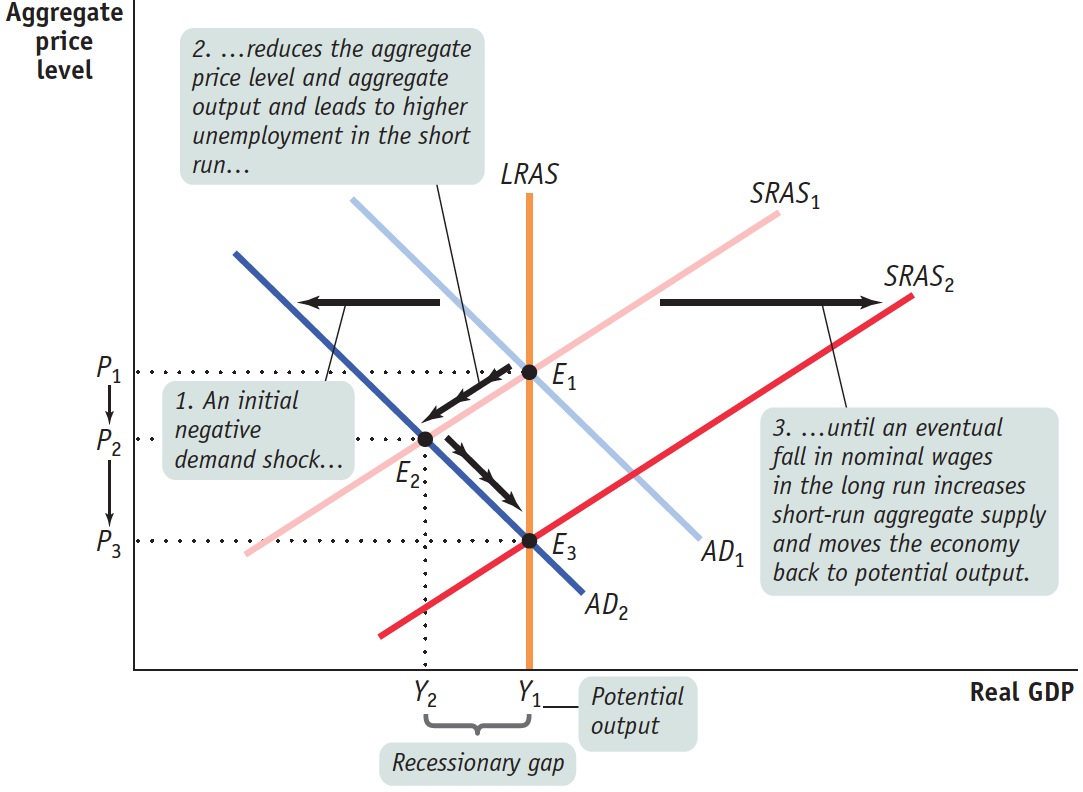| Figure 19.5 | Shor |

Short- Run Versus Long- Run Effects of a Negative Demand Shock In the long run the economy is self- correcting: demand shocks have only a short- run effect on aggregate output. Starting at E1, a negative demand shock shifts AD1 leftward to AD2. In the short run the economy moves to E2 and a recessionary gap arises: the aggregate price level declines from P1 to P2, aggregate output declines from Y1 to Y2, and unemployment rises. But in the long run nominal wages fall in response to high unemployment at Y2, and SRAS1 shifts rightward to SRAS2. Aggregate output rises from Y2 to Y1, and the aggregate price level declines again, from P2 to P3. Long- run macroeconomic equilibrium is eventually restored at E3.
[Leave] [Close]